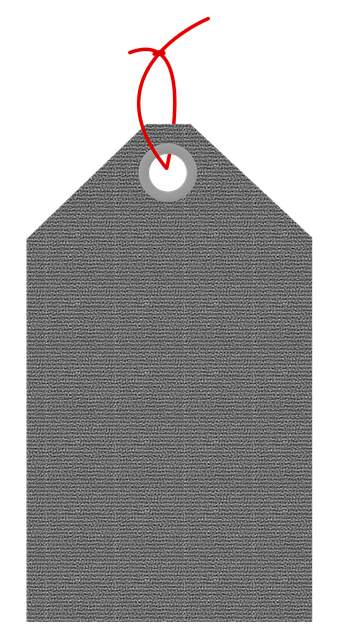Skin tags, caused by friction, genetics, or hormonal changes, can be removed at home with over-the-counter creams or essential oils, but larger cases may require a local skin tag removal center for professional treatments like cryotherapy or surgical excision. Aftercare includes gentle cleaning and preventing infection. Consult specialists for sensitive skin or numerous tags to ensure effective removal and personalized advice.
Are you tired of dealing with unsightly skin tags? Learn the best practices for safe, at-home skin tag removal. This comprehensive guide covers everything from understanding the causes and types of skin tags to effective removal methods using essential oils. We also provide insights into when it’s time to visit a local skin tag removal center and crucial post-removal care tips. Get rid of skin tags once and for all with these expert strategies.
- Understanding Skin Tags: Causes and Types
- Safe at-home Removal Methods
- Essential Oils for Skin Tag Disappearance
- When to Visit a Local Skin Tag Removal Center
- Post-removal Care: Tips and Precautions
Understanding Skin Tags: Causes and Types

Skin tags, also known as acrochordons, are small, soft skin growths that typically appear on areas where skin rubs against itself, such as the neck, armpits, and groin. They are generally harmless but can sometimes cause discomfort or irritation. Understanding their causes and types is an essential first step for anyone considering at-home removal methods or seeking services from a local skin tag removal center, like those in Colchester or Preston.
There are several factors that contribute to the development of skin tags. Common causes include genetics, hormonal changes, obesity, and friction or irritation of the skin. They can occur in various types, including single tags or clusters, and may vary in size from a few millimeters to several centimeters. Top dermatologists for skin tag removal often recommend identifying the specific type as it can influence the effectiveness of different removal techniques, such as freezing (cryotherapy), cutting, or using topical creams.
Safe at-home Removal Methods

When considering safe at-home skin tag removal methods, it’s essential to understand that while some techniques are effective, others may cause complications or infections. Using over-the-counter creams or salicylic acid can help in certain cases, but for larger or persistent tags, a local skin tag removal center offers more advanced options. Professional services like skin tag removal Manchester and skin tag removal Nottingham often employ methods such as cryotherapy (freezing) or surgical excision under local anaesthesia, ensuring faster and safer results compared to DIY approaches.
Avoiding unsanitary practices is crucial for preventing infections. Never attempt to cut or burn off skin tags at home without proper medical guidance. Instead, opt for sterile tools and follow basic hygiene principles after each attempt. Regular monitoring and consultation with a dermatologist are also recommended, especially if the tags show signs of growth or change in appearance, as they might indicate more serious conditions requiring professional mole and skin tag removal.
Essential Oils for Skin Tag Disappearance

Essential Oils for Skin Tag Disappearance
When considering home remedies for skin tag removal, essential oils stand out as a popular and potentially effective option. These concentrated plant extracts have been used for centuries not just for their aroma but also for their medicinal properties. Certain essential oils, like tea tree oil, lavender, and rosemary oil, are known to possess anti-inflammatory and antimicrobial characteristics that can help reduce skin tags. Applying these oils topically may aid in shrinking and disappearing skin tags, especially when combined with other home care practices like regular exfoliation and gentle cleaning.
For those seeking more professional options, a local skin tag removal center or clinics like Manchester skin tag clinic and private skin tag removal Liverpool offer safe and effective treatments. While essential oils can be a natural alternative, consulting a specialist ensures the procedure is performed hygienically and with expert knowledge, especially for individuals with sensitive skin or larger skin tag concerns.
When to Visit a Local Skin Tag Removal Center

If your skin tags are causing discomfort, pain, or significant cosmetic concern, it might be time to consider a visit to a local skin tag removal center. While many opt for at-home remedies, professional services offer advanced techniques and expertise tailored to your needs. For instance, centers like Manchester Skin Tag Clinic and Blackburn’s leading facilities provide safe and effective methods such as freezing, cutting, or laser treatments.
In cases where skin tags are numerous, persistent, or located in sensitive areas, consulting a specialist is advisable. A local skin tag removal center can assess your unique situation, offering personalized advice and the latest treatment options, ensuring you receive the best care possible for a smooth, tag-free complexion.
Post-removal Care: Tips and Precautions

After successfully removing skin tags at home, proper post-removal care is essential to prevent infection and ensure optimal healing. Firstly, gently clean the affected area with mild soap and warm water, patting it dry afterwards. Applying a thin layer of over-the-counter antibiotic ointment or petroleum jelly can aid in keeping the wound moist and promoting healing. It’s crucial to avoid scratching or touching the site to prevent irritation.
When considering local skin tag removal centers like the Canterbury Skin Tag Clinic, Skin Tag Removal Wakefield, or Private Skin Tag Removal Bristol, professionals offer advanced methods for more persistent or unsightly tags. They can also provide personalized advice on aftercare, including recommending suitable moisturizers and reminding you to watch for signs of infection like redness, swelling, or pus. Always follow their guidance for the best outcomes.
When considering skin tag removal, it’s important to weigh your options. At-home methods offer safety and convenience, but for larger or persistent tags, a visit to a local skin tag removal center may be necessary. Always remember to practice proper post-removal care, regardless of the method chosen. By understanding causes, exploring essential oils, and knowing when to seek professional help, you can make an informed decision for achieving smooth, tag-free skin.
